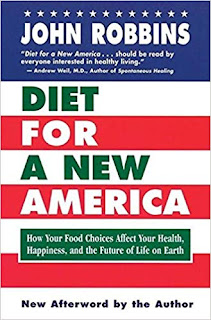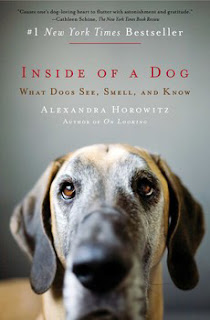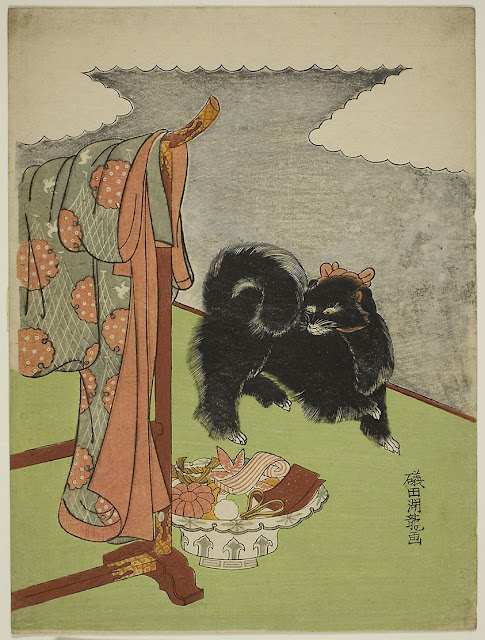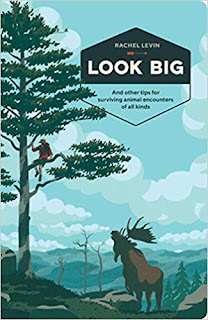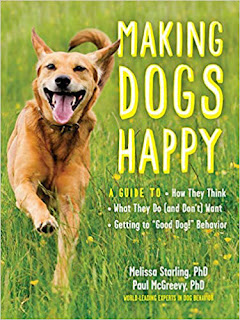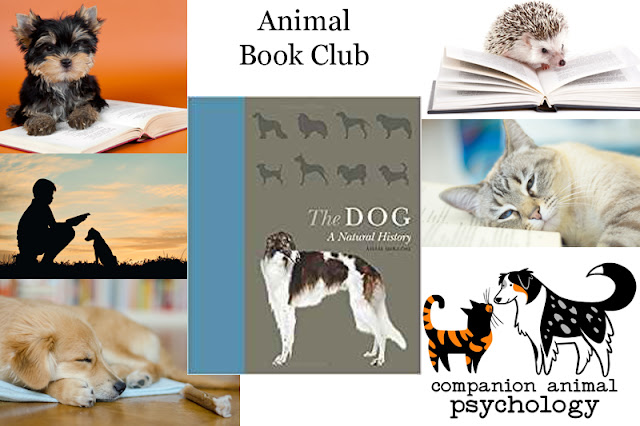Sometimes books can have a surprising effect on us. The words mingle in our brain and make some kind of magic that percolates out into the real world.
I was curious to know which books about animals have affected people, and so I put out a call asking people about the animal book that changed their life. These are their answers.
Dog Sense by John Bradshaw
Emily Tronetti, MS, CPDT-KA, of Heal to Howl told me,
“In 2014, I was working as a veterinary receptionist and had my own pet sitting and canine massage business. One day, at a bookstore, I found the book Dog Sense: How the New Science of Dog Behavior Can Make You A Better Friend to Your Pet
This book changed everything I thought I knew about dogs. I was amazed by the long and interconnected evolutionary history between humans and dogs. I was fascinated by how dogs perceive the world, their emotional lives and how these factors and more may impact our relationships with them. Dog Sense made me realize that I had so much more to learn about this species we share our lives with. I wanted to be a better dog guardian and professional, and I hoped to share this knowledge with others to help them do the same.
I noticed that Dr. Bradshaw was referred to as an “anthrozoologist.” Inspired by his book, I googled this to learn more. One of the first search results was the anthrozoology program at Canisius College. Upon further research, this program seemed like the perfect fit for me. I was accepted into the program in 2015 and embarked on an incredible educational journey that changed my career, how I view and think about the world and more! To this day, I’m deeply grateful for Dr. John Bradshaw and his book. I truly wouldn’t be where I am today had I not read it!”
The Culture Clash by Jean Donaldson
Two people told me about the effect reading The Culture Clash had on them.
Joan Hunter Mayer MBA, certified professional dog trainer at Inquisitive Canine and inventor of TransPaw Gear told me,
“The year was 2004. We had had our dog Poncho for about a year, working with a trainer who used both positive reinforcement and alpha rolling as her go-to training approach. We were new pet parents, and at the time didn’t know about using specific techniques. This trainer knew that both my husband and myself were into science-based learning and suggested we read a book called The Culture Clash
Not only did this book change my life, but it changed Poncho’s and every other dog I have worked with. I ended up becoming a certified professional dog trainer, even attended Jean’s Academy for Dog Trainers. It’s safe to say this book is my bible.”
Nickala Squire CTC, dog trainer at Carefree Canine told me,
“All my life I knew I wanted to work with dogs as a career but as I began my dog training journey I didn’t know where to start. I was under the common (mistaken) impression that dog training was something you figure out on your own, that self-discovery and personal experiences were just as valid learning tools as formal education. Most of my knowledge therefore, came from TV, online forums and the local dog trainer at the time. I couldn’t get enough of it! When someone (now a friend) challenged my beliefs in those online forums and suggested that I may actually be causing my dog emotional suffering, I was both distraught and intrigued. She pointed me to various resources including The Culture Clash. This was really my first experience reading anything evidence based about dog training. It was done so in a way however that was easy to get hooked on, with humorous and intelligent analogies. The book changed my entire life. Not only did I realize that dog training was a factual and measurable profession, it opened my eyes to the biases and mistaken beliefs I had. If I had so easily and wholeheartedly been misled by things I saw on TV, what else could I be wrong about?
I consider myself a compassionate skeptic, but I was not always this way. I am forever grateful to that friend for leading me to The Culture Clash and to Jean Donaldson for writing it. My life would not have been the same without it!”
Mustang, Wild Spirit of the West by Marguerite Henry.
Allison Hunter-Frederick, Lincoln Pet Culture, said,
“There are a lot of recent books that have impacted my choices in animal welfare, but if I were to pick just one book that changed my life it would have to be a classic. I read Mustang, Wild Spirit of the West
The Mammals of British Columbia by Ian McTaggart Cowan and Charles J. Guiguet
Janice Holly Booth, the Anxious Advenurista, told me,
“The animal book that changed my life is called The Mammals of British Columbia, by Ian McTaggart Cowan and Charles J. Guiguet. First published in 1956 and loved by me to this very day, it's a comprehensive list of hooved, winged, and webbed animals that live in the province where I was born. Even before I could read, I would pore over the book and its beautiful black and white illustrations by Frank L. Beebe. A shrew diving in water, little bubbles coming from its nose; a sky full of big-tailed bats; a Baird dolphin leaping from the ocean. Everything that could be known about the animal was in that book, including drawings of its skull, its footprint, its teeth. And when I learned to read, I memorized every detail about every animal. The book fired up my deep curiosity about the animals living in the wilds around me, and encouraged me to look for signs of them whenever I would take a walk. Being able to identify a footprint in the mud was always a thrill. The book was really the beginning of a lifelong adoration and deep respect for the natural world.
It also inspired me to become an artist, to paint animals with the kind of realism and life-force that Beebe had done in this book.
As I write this to you, I have a copy next to me, from 1978. I still have the book, even though I no longer live in British Columbia, or Canada for that matter. The book - as they say - is a keeper.”
Diet for a New America by John Robbins
Dianna Bari, president of db Media, says,
“Diet for a New America
I think it was because the chicken was more disguised being that it had a battered outer coating. Also, I think chickens are given the least amount of compassion, unfortunately. I was guilty of that - I thought of them as ugly and stupid. But then I read Diet for a New America - and I tell people the story still to this day. I haven't read the book in 28 years so I am just going off of my memory and what resonated for me but the book takes on every angle of why people should not eat animals - for the environment, moral reasons and our health. One chapter focused on a study that was being done on hens. Researchers gave a hen duck eggs to sit on and she sat on them - even though duck eggs are bigger than chicken eggs. They thought that perhaps the hen was too stupid to realize they were not her own eggs. But when the ducks hatched, the hen took care of them. Again, they thought she was too stupid to realize they were not her own.
Then something miraculous happened. Chickens don't go in water and don't like it. But this hen knew the ducks she was taking care of needed to learn how to swim so she led all of them to a nearby pond and nudged each of them in so they could learn how to swim. The day I read that was the day I gave up chicken and I was ashamed that I hadn't expanded my compassion to chickens before reading that book. My life has always been about animals - I truly value them more than people and my life is about protecting them-both in my professional life in PR with clients like Air Shepherd and in my personal life through dog rescue. There were many factors and resources that opened my eyes along the way but that book served as a life-changing turning point.”
Animal Liberation by Peter Singer
Jackie Johnston CTC CPDT-KA CSAT dog trainer and behaviour consultant at Believe in Your Dog
“Animal Liberation
For more book suggestions, check out the Animal Book Club or my Amazon store: https://www.amazon.com/shop/animalbookclub
Is there a book about animals (fiction, non-fiction, or poetry) that changed your life? If you’d like your answer to be considered for inclusion in a future post on Companion Animal Psychology, email me on companimalpsych at gmail dot com. Be sure to put ‘The animal book that changed my life’ in the subject line, and remember to include your name and website (if you have one). Thanks. Entries may be subject to minor copy edits. I will let you know if your answer is chosen.
Join over 2,500 animal lovers and subscribe to Companion Animal Psychology.
As an Amazon Associate I earn from qualifying purchases. As an Etsy affiliate, I earn from qualifying Etsy purchases.





